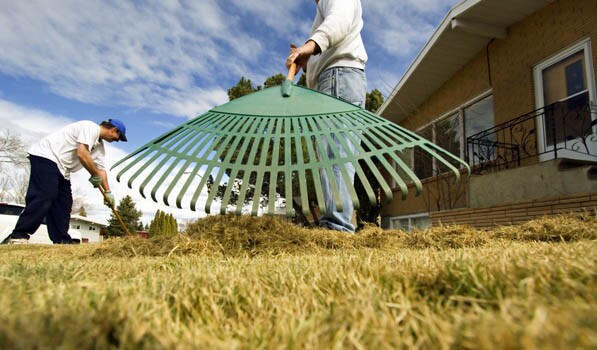Looking at Suburban Lawns and Seeing the Future of Water Conservation


A segment based on this story was produced for KCET's award-winning TV show "SoCal Connected." Watch it here now.
Pedestrians like me have an intimacy with the stuff of the everyday that habitual drivers probably don't. Since I live in a conventional, tract house suburb from the 1950s, I look at lawns at lot. Serial patches of lawn about 40 feet wide and 20 feet deep each get at least a glance as I pass.
Grass isn't seen as innocent landscaping anymore. As long ago as 1981, the Denver Water Planning Division promoted "xeriscaping" as a way to conserve water in the dry lands of the West. That's because lawns typically use more water than all other garden landscaping combined.
Lawn removal is also a moral sign: if you have a suburban green lawn, you're doing something wrong. The brownscapes that have begun to intersperse my walk must be the front yards of the really virtuous.
Still, lawns have defenders even among purists. As Tom Hawkins, an Orange County plant grower, noted at the Lawn Reform Coalition, "temperatures in cities around the world are on the rise due to the urban heat island effect. Numerous studies have shown turf grass to provide the greatest evaporative cooling effect of any planted landscape. Turf also reduces water runoff, increases ground infiltration, and helps to purify water before ground water recharge."
The fault isn't in our lawn, but in the kind of grass it's made of. Hawkins suggests water-friendly turf, such as a native Carex or buffalograss. "Years of research at UC Davis and Riverside resulted in a buffalograss selection called 'UC Verde'; this grass has been shown to get by on just 12 inches of water per year (and) makes beautiful groomed turf at 2-3 inches tall. Or it may be grown as a short meadow at 6 inches in height. The water savings is 75 percent ... that's huge."
Hawkins is skeptical of "cash for grass" programs, arguing that a careful selection of the right kind of turf and a disciplined watering schedule can conserve as much irrigation water as drought-tolerant landscaping while preserving the patch of green that's the sign of the suburbs. He estimated in 2011 that it cost less than 75 cents per square foot to replace a conventional lawn with turf bred for low water use.
Cities that have a lawn replacement program aren't buying Hawkins' argument. The Los Angeles Department of Water and Power offers a grant of $1.50-$2.00 per square foot for residents who install low-water-use plants that don't require mowing. The DWP will pay up to $4,000 for the removal of residential turf. Long Beach will pay $3.00 per square foot up to a maximum of 1,000 square feet of lawn. Other cities have similar replacement programs, although the amounts vary. All these programs require the city's pre-approval.
Los Angeles residents are already pretty virtuous. The city has a lower per capita water use (at 123 gallons per day) than nearly all of America's biggest cities. Water conservation after the droughts of the 1970s and 1990s and careful planning by water agencies mean that Southern California today uses about the same amount of water the region did more than a decade ago, despite significant increases in population.
New water storage facilities, expanded reclaimed water distribution systems, and low-water-use appliances have made Southern California less vulnerable to drought.
But it's certain that our current level of conservation won't be enough to spare the region from higher water costs and more stringent forms of water saving, perhaps like those to be enforced in 17 Central Valley towns that are on the brink of running totally out of water. According to the California Department of Water Resources, 2013-2014 is the driest the state has been in nearly 40 years.
A little rain fell softly on the lawns I passed today, too little for the lawns that had burned in the late summer heat. And nothing will restore the lawns that have gone to bare soil, neglected forerunners of a brown revolution.


